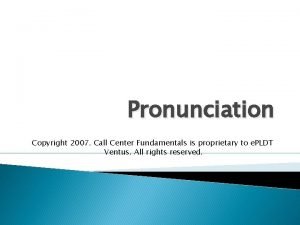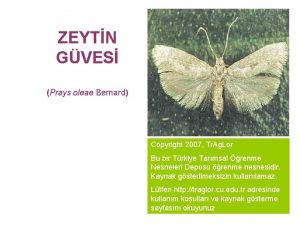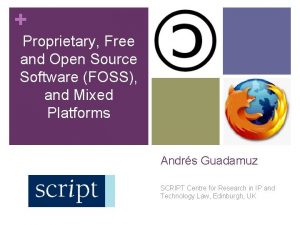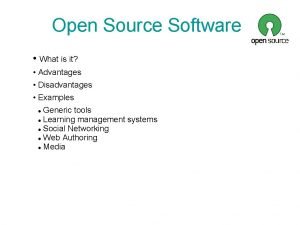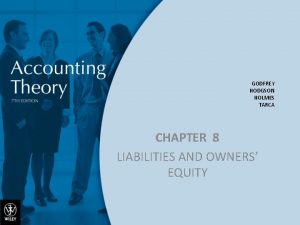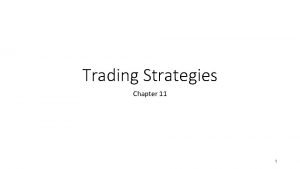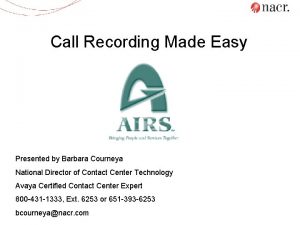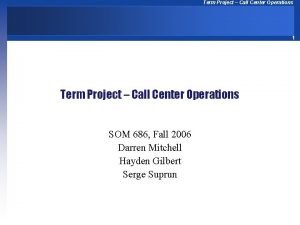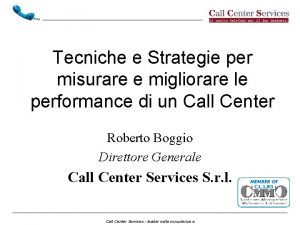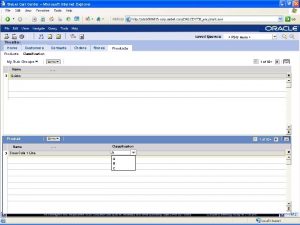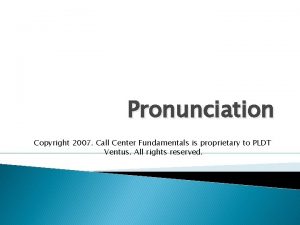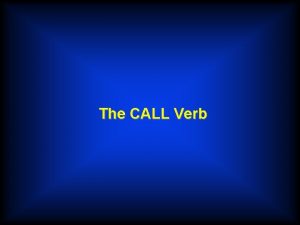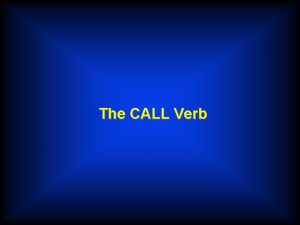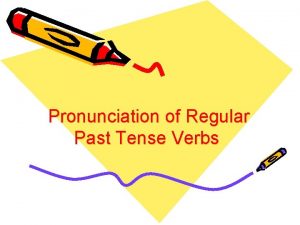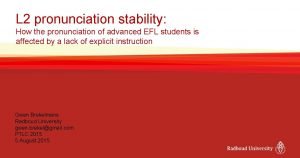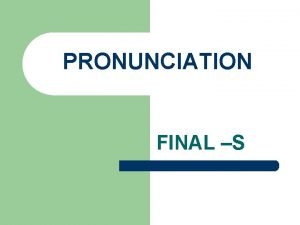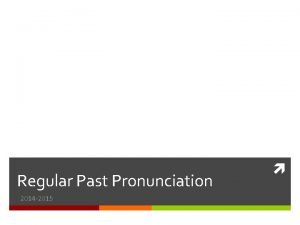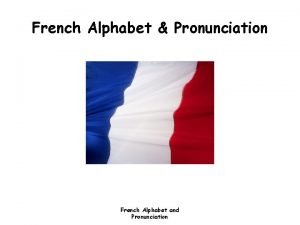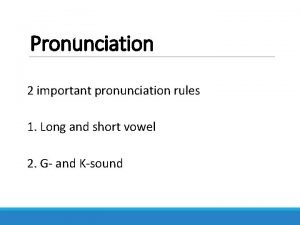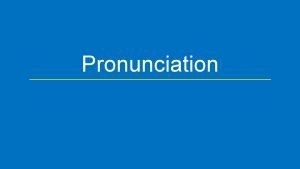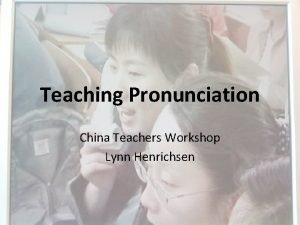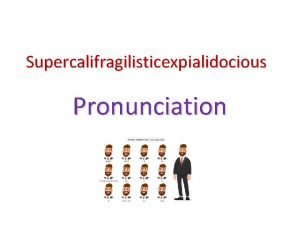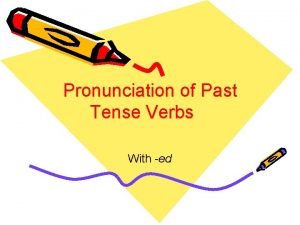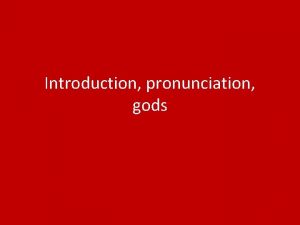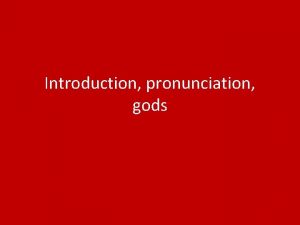Pronunciation Copyright 2007 Call Center Fundamentals is proprietary




















![� Z+Y 1. 2. = ZH How’s your family? [haozhier famlee] Who’s your friend � Z+Y 1. 2. = ZH How’s your family? [haozhier famlee] Who’s your friend](https://slidetodoc.com/presentation_image_h/079a4f008a5ed285b32801e8cd3f4385/image-21.jpg)
- Slides: 21

Pronunciation Copyright 2007. Call Center Fundamentals is proprietary to e. PLDT Ventus. All rights reserved.

� Voiced – are sounds that produce vibration in the vocal chords when pronounced. � Voiceless - are sounds that do not produce vibration in the vocal chords when pronounced. Copyright 2007. Call Center Fundamentals is proprietary to e. PLDT Ventus. All rights reserved.

Voiced and Unvoiceed Chart

SBS 1 Chapter 11 Simple Present Tense

�S is pronounced as /s/ when the original word ends in a voiceless sound. �S is pronounced as /z/ when the original word ends in a voiced sound. � Es is pronounced as /iz/ when ES is pronounced separately.

Chapter 15 Past Tense Regular verbs

�D is pronounced as /t/ when the original word ends in a voiceless sound. �D is pronounced as /d/ when the original word ends in a voiced sound. � ED is pronounced as /id/ when ED is pronounced separately.

/t/ The American T is influenced very strongly by stress, intonation and its position in a word or a phrase.

Rules for various T sounds �T is aspirated “t” at the beginning of a word or a stressed syllable. Example: Top Italian Take Continue Town Attack

�T is produced as a “d” – like flap or a soft d between two vowel sounds in unstressed position. Example Total Auto-pay Locator Category Saturday Water

�T is unreleased or held at the end of a word. Example What Put �T Point Lot not is unreleased or held before “n” in –tain and – ten Example Certain Mountain

�T disappears or is silent after an “n” in unstressed position. This is so because /t/ and /n/ are so closed in the mouth that /t/ can simply disappear. � Example Twenty Printout Internet

Liaisons � American English is not pronounced one by one. Normally, the end of the last word is attached to the beginning of the next word. � Allows us to speak in sound groups rather than in individual words.

Words are connected in four main situations: � Consonant/Vowel � Consonant/Consonant � Vowel/vowel � T, D, S or Z+Y

Consonant/Vowel � Connected when a word ends in a consonant sound and the next word starts with a vowel sound, including the semivowels W, Y, R. � Example � My name is… [my nay miz] Consonant sound [m] and vowel sound[i]

Consonant/Consonant � Connected when a word ends in a consonant sound and the word starts with a consonant sound that is similar in position. � EXAMPLE: Behind the teeth Unvoiced Voiced /t/ /d/ /ch/ /j/ /sh/ /l/ /zh/ /n/ At the Lips Unvoiced Voiced /p/ /b/ /f/ /v/ / m/ /w/

In the Throat Unvoiced Voiced /k/ /g/ /h/ /ng/ /r/ EXAMPLE: 1. I just didn’t get the chance. [I jusdidntge(t)the-chance] 2. I’ve been late twice. [ Ivbinla(t)twice]

Vowel/Vowel � When a word ending in a vowel sound is next to one beginning with a vowel sound , they are connected with a glide between the two vowels. A glide is either a slight [y] sound or a slight [w] sound. � EXAMPLE: 1. Go away [Go(w)away] 2. I also need the other one. [I(y)also nee the(y)other one. ]

T, D, S, Z +Y � When the letter or sound of T, D, S or Z is followed by a word that starts with Y, both sounds are connected. � T+Y 1. 2. 3. = CH What’s your name? [wachername] Can’t you do it? [kant chew do it] Don’t you like it? [don’t chew lye kit ]

� D+Y= 1. 2. 3. � 1. J Did you see it? [didja see it] Could you tell? [couldja tell] Find your keys. [Fine jer keez] S+Y = SH You can pass your exams this year. [yuk’npasher egzamz thisheer]
![ZY 1 2 ZH Hows your family haozhier famlee Whos your friend � Z+Y 1. 2. = ZH How’s your family? [haozhier famlee] Who’s your friend](https://slidetodoc.com/presentation_image_h/079a4f008a5ed285b32801e8cd3f4385/image-21.jpg)
� Z+Y 1. 2. = ZH How’s your family? [haozhier famlee] Who’s your friend ? [hoozhier frend] TAG QUESTIONS Did he? [didee] Is he? [izzy] Would he? [woody] Can’t you? [kanchoo] Would you? [wujoo]
 Call center fundamentals
Call center fundamentals Copyright 2007
Copyright 2007 Pearson
Pearson Blancco oy ltd
Blancco oy ltd Proprietary freeware
Proprietary freeware Confidential and proprietary
Confidential and proprietary Proprietary grief
Proprietary grief Proprietary format
Proprietary format Define proprietary colony
Define proprietary colony Advantages and disadvantages of oss
Advantages and disadvantages of oss Proprietary theory
Proprietary theory Bear spread using puts
Bear spread using puts Long call short call
Long call short call Qfiniti call recording
Qfiniti call recording Webrtc call center
Webrtc call center Asterisk call center solution
Asterisk call center solution Call center projects
Call center projects Migliorare performance call center
Migliorare performance call center Siebel call center
Siebel call center Bpo business proposal
Bpo business proposal Call center school workforce management
Call center school workforce management Kundenservice definition
Kundenservice definition
